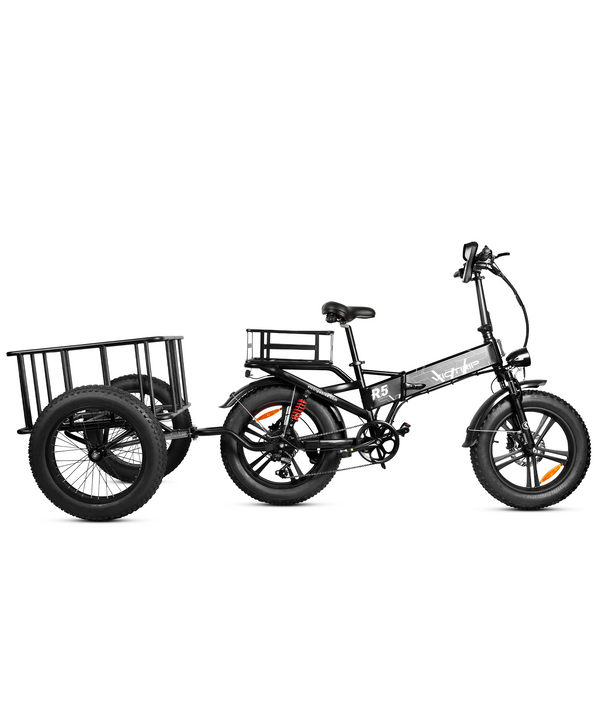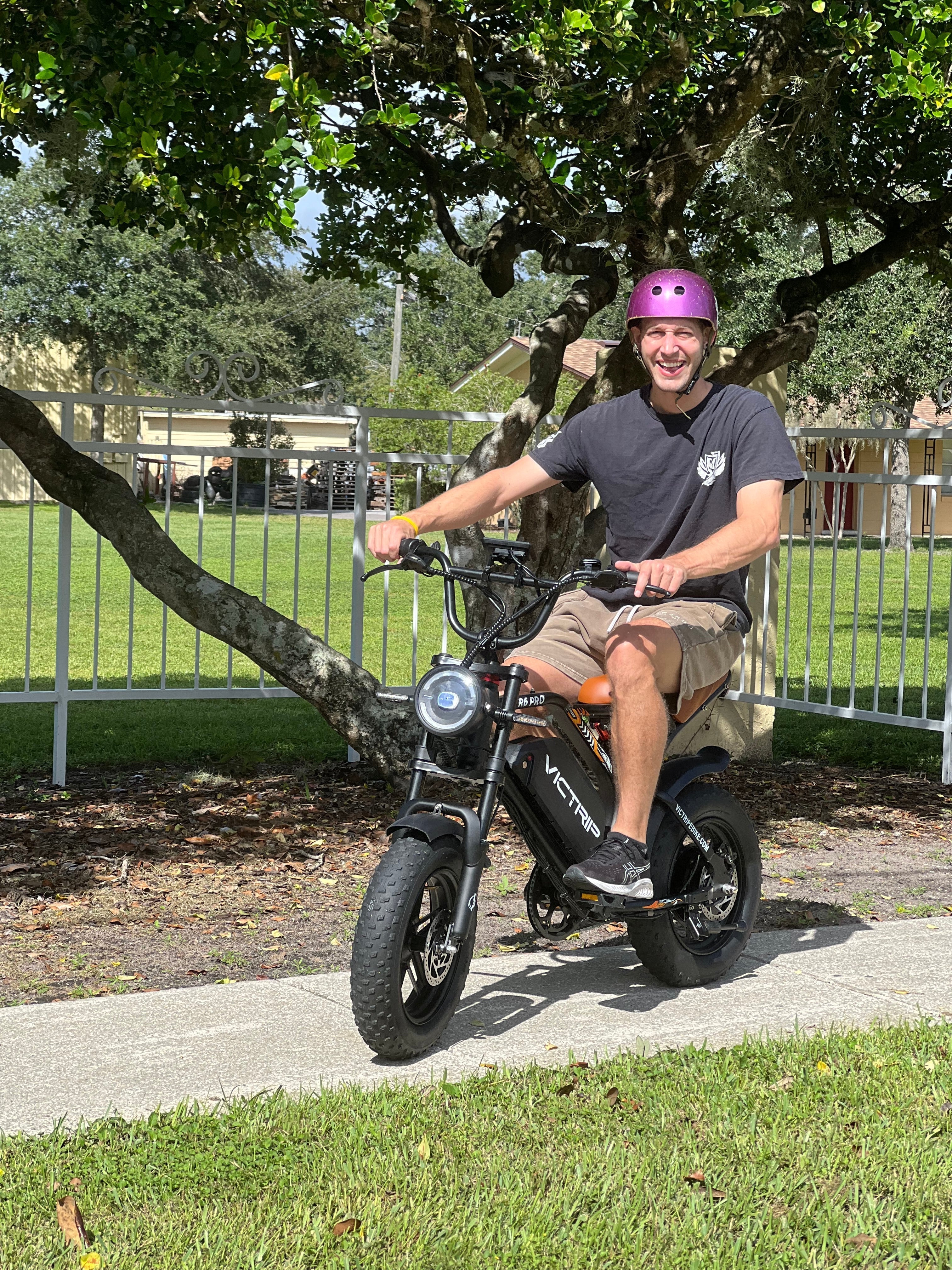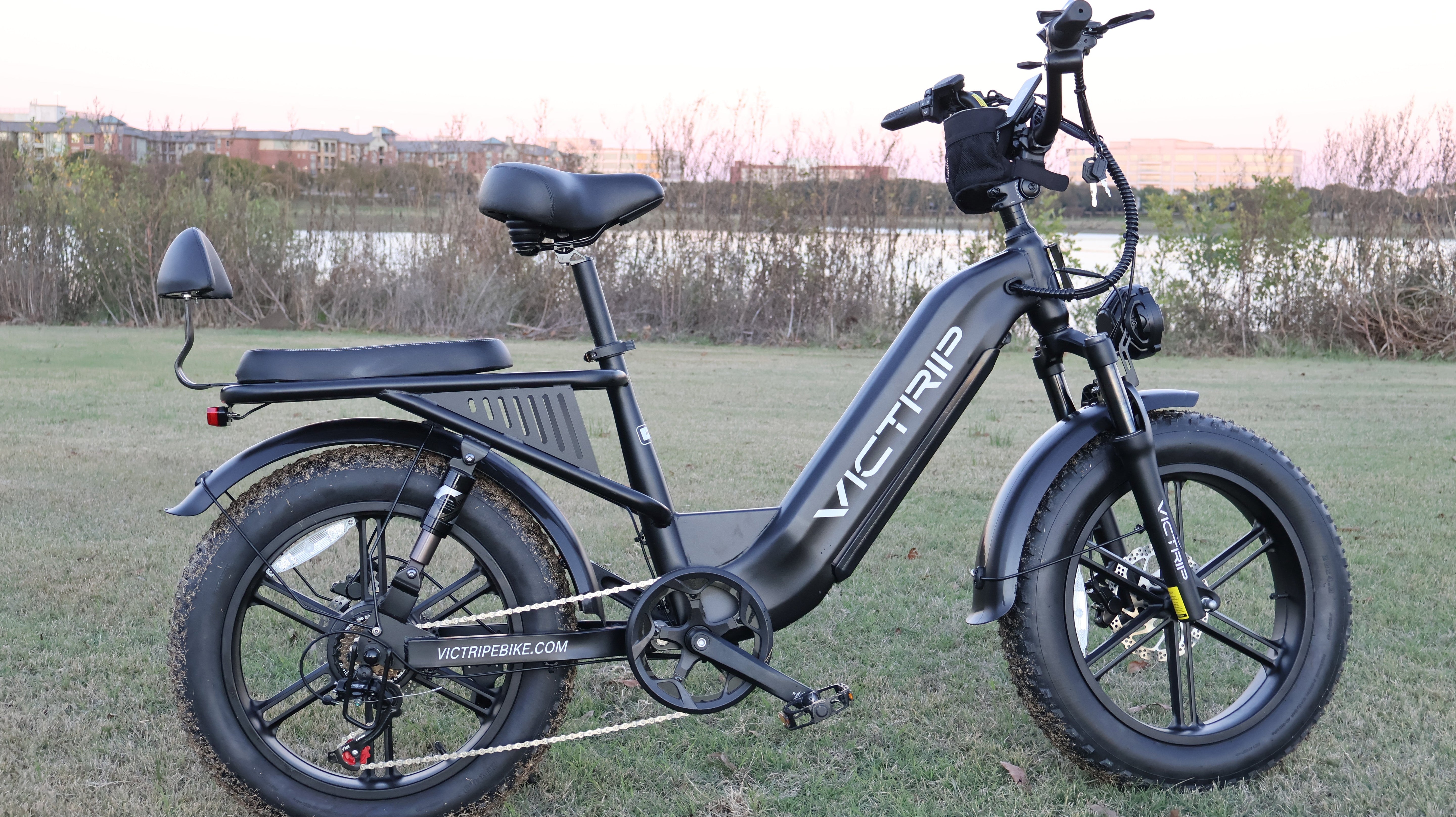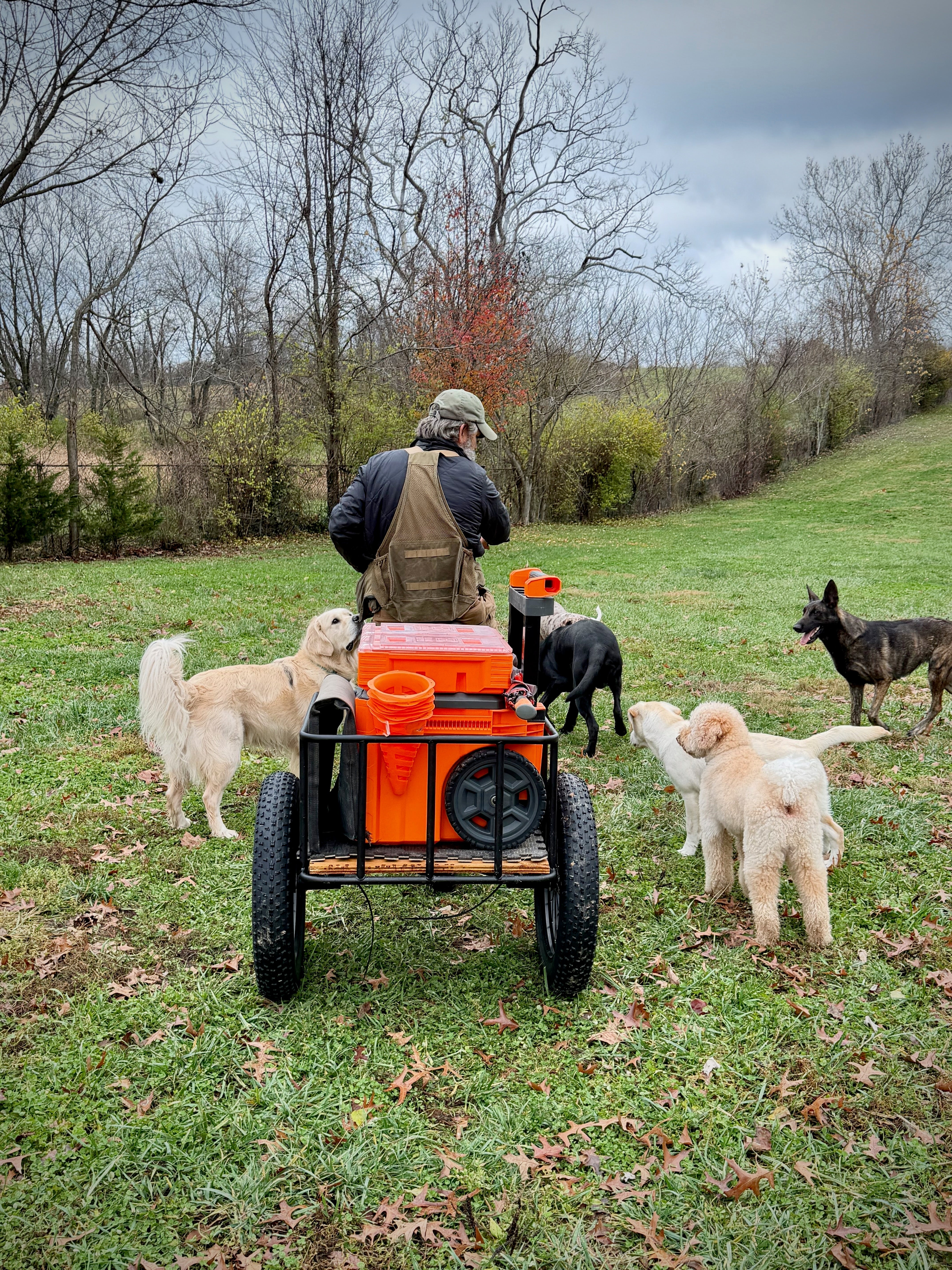
A bike cargo trailer for hunters and outdoor enthusiasts is a two- or single-axle trailer designed to attach to a bicycle, turning a human-powered rig into a compact, low-noise logistic platform. These trailers are built to carry heavy loads—game, packs, coolers, fuel, or camping gear—over variable terrain that conventional vehicles often can't reach. Hunters, backcountry anglers, foragers, and dispersed-camp campers are the primary users, though off-grid photographers, conservation volunteers, and search-and-rescue teams also rely on them.
In short, if you head off the beaten path and need to haul more than your backpack will hold, a cargo trailer transforms a bike into a practical field vehicle. It’s quiet, efficient, and surprisingly robust for its size—features that make it appealing for anybody who values stealth, sustainability, and mobility in the outdoors.
Key Advantages: Why Hunters and Outdoor Enthusiasts Need One
This section summarizes the core reasons hunters and outdoor lovers adopt bike trailers. Following that, we’ll dig into the top 15 benefits in detail.
Bike Cargo Trailer for Hunters and Outdoor Enthusiasts — Mobility & Stealth
One immediate advantage is mobility. A well-designed trailer keeps your center of gravity low and lets you carry loads without slowing you down as much as a heavy pannier system would. Importantly for hunters, trailers are inherently quieter than ATVs or trucks, which reduces disturbance to wildlife and helps you get closer to game.
Gear Volume & Weight Management
Trailers let you transport bulky items like thermoses, tarps, decoys, game meat coolers, and even small stands. You won't need to compress or sacrifice gear; that freedom lets you bring tools that improve comfort and safety.
Cost, Maintenance, and Environmental Benefits
Compared to motorized options, the purchase and operating costs for bike trailers are far lower. There's no fuel to buy, no engine to maintain, and the environmental footprint is minimal. That’s a strong proposition for conservation-minded users.
Top 15 Benefits Explained
Below are the primary, practical benefits—each explained with use-cases, trade-offs, and tips.
1. Quiet, Low-Impact Transport
Trailers are silent compared to engine-powered vehicles. In hunting scenarios, silence is gold: it reduces disturbance and keeps game behavior natural. Quiet transit also improves the odds of reconnaissance without spooking animals.
2. Increased Carrying Capacity
A trailer multiplies what a single rider can carry. Expect to haul meat in cooler boxes, multiple packs, a tripod and camera gear, tents, or a small stove. Because the trailer bears the load, you and your bike remain more nimble.
The VICTRIP Trailer’s 300 lbs load rating exemplifies how a well-designed trailer transforms your e-bike into a mobile hauling powerhouse—perfect for hunters who need to transport game meat, coolers, or field gear across terrain.
TOP PICK

VVICTRIP® Electric Bike Trailer
3. Improved Load Stability
Well-built trailers put weight low and behind the bicycle’s wheelbase, creating superior stability. That’s safer on descents and in crosswinds compared with overloaded backpacks. Many models have low centers of gravity and wide stances to resist tipping.
4. Access to Narrow Trails & Backcountry
Many off-road trails are too narrow for ATVs but perfect for bikes with a single-file trailer. That opens access to ridge lines, spurs, and remote ridges that are otherwise difficult to reach.
5. Versatility Across Seasons
Trailers can be used year-round. Swap wheels to larger diameter tires for snow and mud, or fit a cargo box for rainy seasons. Their modularity makes them useful for hunting in autumn, ice-fishing in winter, and camping in summer.
6. Modular & Customizable Configurations
Trailers come in frame-only options, canvas cargo boxes, and hard-shell containers. You can add racks, straps, or insulated compartments. Hunters often retrofit trailers with game racks, stakes for cooler anchoring, or camouflage covers.
VICTRIP emphasizes modular applications—mentioning pet transport, family adventure setups, delivery uses, and cargo utility—which reflects how adaptable trailers can be to diverse outdoor needs.
7. Simple Rigging & Fast Setup
Most trailers attach via a hitch near the rear wheel axle and can be set up in minutes. Quick-release or pin-hitch systems mean you can detach the trailer at camp and use the bike independently.
8. Safer Game Handling & Transport
A trailer allows you to transport harvested game more respectfully and hygienically—meat can be bagged and stored in coolers that sit flat in the trailer, rather than hanging on a bike frame or stuffed into a backpack.

9. Lower Operating Costs than ATVs
Maintenance on trailers is minimal: tires, bearings, and occasional hardware tightening. You’ll never need gas or oil, and the upfront cost is usually a fraction of a comparable small ATV.
10. Easier Field Evacuations & Emergencies
Trailers can double as evacuation platforms—carry an injured person in an improvised stretcher or haul emergency gear. Their cargo space is an asset for first aid kits, extra layers, and shelter equipment.
With space to load gear or even harvests, the VICTRIP Trailer means one could also improvise emergency transport (e.g., medical supplies or evacuation)—all without burdening the rider.
11. Reduced Physical Strain on Riders
By placing load weight on wheels rather than shoulders, trailers reduce fatigue and the risk of musculoskeletal strain. For long, multi-day hunts, that can mean staying fresher and safer.
12. Increased Safety in Traffic/Shared Trails
When used on mixed-use trails or rural roads, trailers with flags and reflectors improve visibility. Their predictable movement is easier for drivers to read than cyclists carrying awkward, asymmetric loads.
13. Compact Storage & Portability
Many models fold or disassemble and store easily in a garage or truck bed. This portability makes the trailer a flexible tool that complements other gear rather than competing with it.
14. Durable Designs for Rugged Use
High-quality trailers use welded steel or aircraft-grade aluminum frames, heavy-duty axles, and puncture-resistant tires—materials intended for rough use and limited maintenance.
15. Long-Term Value & Adoption
Trailers retain practical resale value because their designs are timeless. For multi-season, multi-use outdoorspeople, a trailer becomes a long-term investment that pays back in capability and convenience.
Choosing the Right Bike Cargo Trailer
Selecting the best trailer depends on terrain, load, and intended uses. Below are the critical selection criteria and quick buying tips.
Materials and Build Quality
Frames: Steel is strong and inexpensive; aluminum is lighter and resists rust. Both have place depending on weight vs. durability priorities. Look for corrosion-resistant finishes and sealed bearings for reliability.
Weight Capacity and Frame Design
Decide your max payload (gear + meat) and add a safety margin. If you plan to carry game plus camping gear, choose a trailer rated for 80–150 lbs (36–68 kg) or more, depending on needs.
Wheels, Suspension, and Off-Road Considerations
Large-diameter wheels (20"–26") roll over obstacles easier, whereas fat tires give flotation in mud and snow. Suspension or flexible frame designs smooth jolts and protect contents on rough trails.
Hitch Types, Load Centers, and Balance
Rear-axle hitches that pivot in multiple axes provide stable tow and predictable handling. Position heavier items low and centered to maintain tracking and reduce trailer sway.
Read More: How to Choose the Best Electric Bike Trailer for Your Needs?
Maintenance, Care, and Repair Tips
-
Tires & Tubes: Check pressure and tread before each outing. Carry a spare tube and pump.
-
Bearings & Axles: Clean and lubricate semi-regularly—especially after wet or dusty trips.
-
Fasteners: Inspect bolts, pins, and hitch hardware; torque to manufacturer specs.
-
Fabric & Covers: Rinse mud, dry thoroughly, and treat canvas with waterproofing if recommended.
-
Storage: Store disassembled or covered to reduce weather wear; use silicone spray on pivots.
Safety Best Practices for Field Use
-
Use high-visibility flags and reflectors on roads.
-
Pack weight low and centered.
-
Secure loads with straps and netting.
-
Practice tight turns and descents with loaded trailers in a safe area before venturing into complex terrain.
-
Attach a safety tether between bike and trailer as a backup to the hitch.
-
When hauling meat, use food-safe containers and coolers to maintain hygiene.
Conclusion
Bike cargo trailers deliver a unique combination of stealth, efficiency, and utility for hunters and outdoor enthusiasts. They expand what a single rider can achieve in remote landscapes—enabling longer trips, safer game transport, and multi-season use—all while minimizing environmental impact. Whether you’re a weekend hunter, long-range forager, or conservation volunteer, a well-chosen trailer is a practical investment that multiplies capability without complicating logistics.
If you’re considering one, map out typical payloads, terrain, and seasonal needs; test a few hitch types and wheel sizes if possible; and prioritize durability and ease of maintenance. Do this, and you’ll get a tool that’s quiet in the field, reliable in the rain, and indispensable for years to come.
FAQs
Can I use a cargo trailer for big game hunting?
Yes — many hunters use robust trailers to haul deer, elk racks, and meat. Choose a trailer with adequate payload (80–150+ lbs), easy-clean surfaces, and tie-down points. For heavier animals, plan multiple loads or combine with a packout team.
Are bike trailers legal on hiking trails and wildlife areas?
Regulations vary widely. Some trails allow human-powered trailers; others restrict wheeled access to protect fragile soils or wildlife habitat. Always check land manager rules (state parks, national forests, private lands) before entering.
How do I clean and preserve meat when hauling in a trailer?
Use sealed game bags and insulated coolers with ice packs. Keep meat out of direct sun and off the trailer floor by using a raised rack or pallet. Rapid cooling after field dressing is vital—plan route and timing accordingly.
Can trailers handle snow and frozen ground?
Yes — with wider tires or skis, many trailers perform well on snow. Low center-of-gravity designs reduce tipping risk. In icy conditions, lower speeds and cautious cornering are essential.
Are there trailers specifically for mountain bikes vs. touring bikes?
Some trailers are sized for mountain bikes with stronger hitches, larger wheels, and beefier axles. Touring trailers may be lighter and optimized for paved or gravel routes. Match trailer specs to your bike and terrain.
What’s the average cost and expected lifespan of a good trailer?
Entry-level trailers might start around $150–$300; mid-range options $300–$800; heavy-duty, specialty trailers $800+. With basic maintenance, well-built trailers can last many seasons—often 5–15 years depending on use and care.
How do I carry a trailer on a vehicle?
Many trailers disassemble or fold. Remove or fold the handle/hitch, detach wheels if needed, and place components in a pickup bed or on a roof rack. Check weight limits and secure components.




Share:
Do You Need a Driver’s License for an E-Bike in 2025? Full US Guide
Electric Bike Road Safety Laws 2025: What Changed This Year?